Dora Wings 1/48 Curtiss-Wright SNC-1 Falcon II
The airplane:
Reflecting the shift in aviation design in the years leading up to World War II, the SNC Falcon was an all-metal low-wing monoplane derived from a light fighter design and widely used as a training aircraft.
Developed at the Curtiss-Wright St. Louis factory, the CW-22 was developed from the CW-19 via the single-seat CW-21 light fighter-interceptor. The prototype first flew in 1940. With less power and performance than the CW-21, the two-seat, low-wing, all-metal CW-A22 had retractable tailwheel landing gear, with the main gear retracting rearward into underwing fairings.
The CW-22 prototype first flew in 1940, with Curtiss presenting it to customers as a civilian sport or training monoplane or as a combat trainer, reconnaissance and general purpose aircraft for military use. The CW-22 and -22B were sold to the Netherlands, Turkey, and some Latin American countries. Following the outbreak of World War II, the Japanese captured several of the Dutch aircraft and put them in service.
The main customer for the aircraft equipped with the Wright R-975 Whirlwind air-cooled radial engine was the Royal Netherlands East Indies Army Air Force and 36 were exported. The aircraft had to be delivered to the Dutch in Australia due to the advancing Japanese forces. A developed version, the CW-22B, was sold to Turkey (50), the Netherlands East Indies (25) and in small numbers in South America. Some of the Dutch aircraft were captured and operated by the Imperial Japanese Army Air Force. The CW-22 and CW-22B were armed with two machine guns, one fixed.
An unarmed advanced training version, the CW-22N, was demonstrated to the Navy. To help to meet the war-driven need for aviator training, and transition from biplanes to monoplane aircraft, the Navy ordered 150 CWE-22Ns in 1940. Further orders brought the total to 305 aircraft, which were designated SNC-1 Falcons.
The SNC was used as an advanced trainer in limited numbers but were withdrawn from service in 1944 due to structural failure of the fuselage at the point just ahead of the tail where if was very narrow.
After the war, several SNC-1s appeared in civil service. I saw one at the Watsonville West Coast Antique Airplane Fly-In back in the 1970s.
The Kit:
This kit by Ukraine's Dora Wings is the first injection-molded 1/48 kit of the SNC-1, and continues their release list of Kits I Never Expected Anyone To Do. Previously, Bob Norgren's Sierra Scale Models released both a resin and a vacuform version of the SNC-1, while Kora Models has released a 1/72 injection-molded SNC-1 kit several years ago that is the definition of “limited-run.”
This kit, like Dora Wings others, is a “high end limited run” kit, with well-molded and designed parts, petite surface detail, a nicely-detailed cockpit, clear canopy and interesting markings options. The kit provides markings for a U.S. Navy SNC-1 and CW-22s of the Peruvian and Ecuadorean air forces.
Construction:
Once again, committing the revolutionary act of following the instructions, which are not “somebody's opinion,” will give you a nice result.
Overall, the kit is quite simple and offers no surprises. There is some flash needing to be cleaned off parts, and you should do this because this is a CAD kit with precise fit.
I started by assembling each fuselage half separately. Because of the curves in the design around the wing fillets, and the limitations of Dora Wings molding machine, each fuselage half is multi-part. By assembling each fuselage half completely before proceeding, you can get good fit that won't require a lot of putty and sanding later. In fact I needed no putty or other filler on this kit.
Once that was done, I painted the cockpit parts Interior Green and then assembled them. I used Eduard seatbelts, my only departure from an OOB build, because I had them available.
I then painted and assembled the engine, which was perhaps the most complex bit of assembly in the entire project.
I then fitted the cockpit and engine into the left fuselage half and glued them in position, after which I glued the fuselage halves together and put the sub-assembly aside to set up.
The wings were then assembled, with the ailerons posed in neutral position. I attached the elevators to the horizontal stabilizers with a slight droop.
I then attached the wing and fuselage sub-assemblies. I had to bend the wing down to “pop” it up into position, after which I glued it and found no need of any filler along the joining surfaces. I attached the horizontal stabilizers and the rudder.
After dipping the canopy in Future, I glued it in position. The canopy is molded closed, and it looks better closed than open, from photos. It is clear enough to see everything in the cockpit.
Paint and Decals:
I masked the canopy with the masks provided in the kit. After preshading the model, I painted the lower surface with Tamiya XF-80 Royal Light Grey, and the upper surfaces with my mixture for USN Blue-Grey. I went back over the upper color with some white added to the paint for some sun-fading, since the original airplane was based at Corpus Christi, Texas.
After airbrushing some clear gloss overall, the kit decals went down without problem.
Final finish and assembly:
I gave the model an overall coat of clear flat, then assembled the landing gear and attached it, then attached the clamshell gear doors and finally the prop. I unmasked the canopy and called it finished.
Overall:
Another airplane I never thought to see as an injection-molded kit in 1/48. Dora Wings kits are very nice and this continues that.
Dora Wings is still producing kits, despite the war going on in Ukraine. The Ukraine Post is still delivering packages. You can order this kit from the Dora Wings website, and the funds will go to the Ukrainian Army, according to what Eugen has posted at the site. Thus, you can get a nice kit and be a Good Person at the same time.
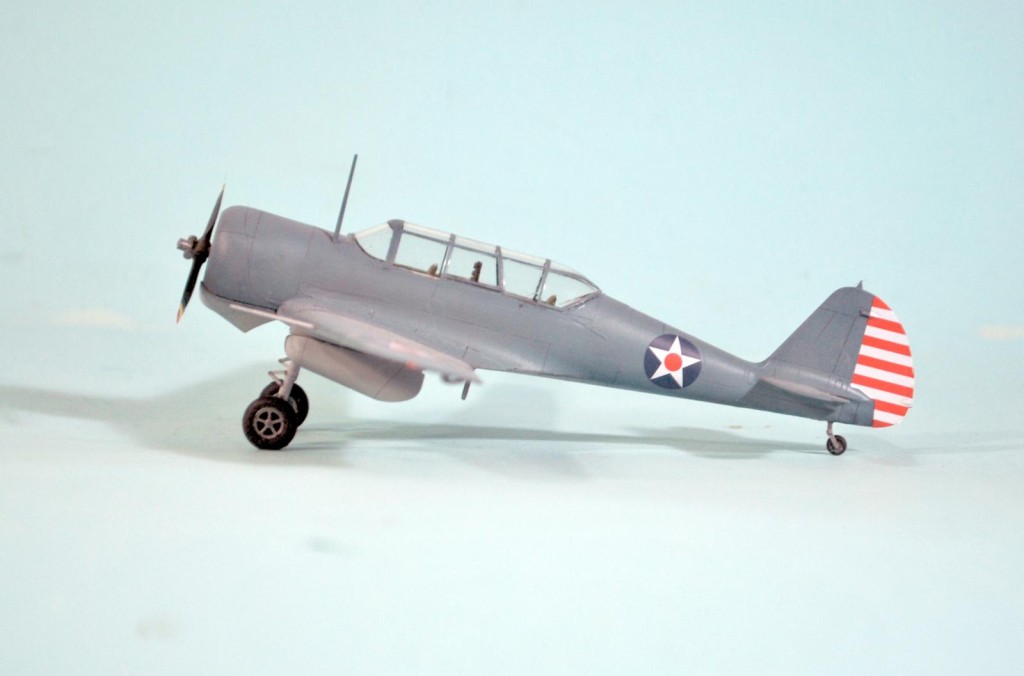
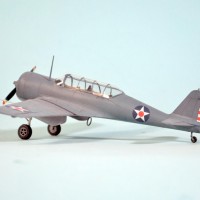
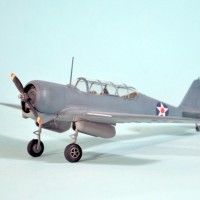
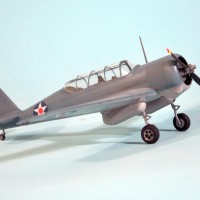
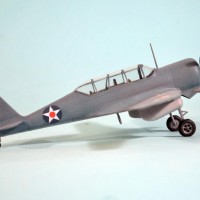
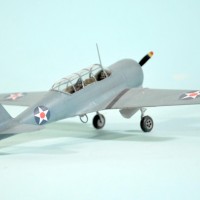
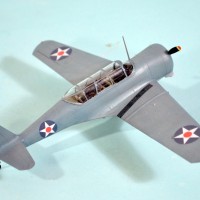
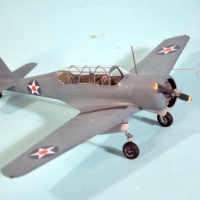
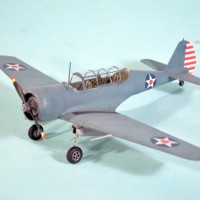
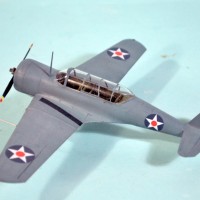

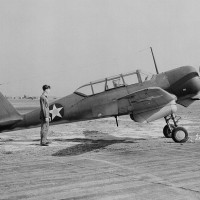
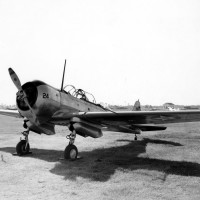
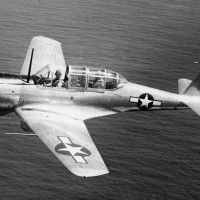
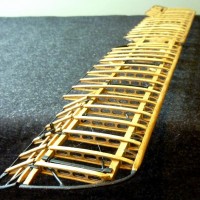
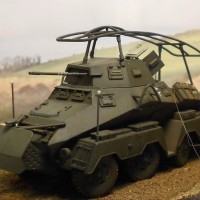
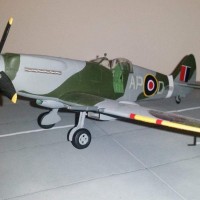

Very unusal plane! great job, and great article! I like your pre-sheiding.
Ditto to @lis comments, Tom!
A beautiful model of a not so known type. The result is truly eye catching!
Thanks, as always, for the great info about the plane.
It is really positive that Ukraine "lives".
Excellent achievement on this not so often seen aircraft, Tom @tcinla
Read this morning your article on MM as well.
Great supporting article on this unusual plane.
"Another airplane I never thought to see as an injection-molded kit in 1/48. Dora Wings kits are very nice and this continues that."
Nothing short of a miracle given the conditions that the kits are being made. All the best to Dora wings.
Two thumbs up TC.
Nice history and build notes Tom . “ follow the instructions, revolutionary ! “ very funny as that seems to be in short supply in the world at large. Curtiss again. It went . I hope Ukraine and it’s injection mould mastery stays.
Well - there's one I didn't know existed! Thanks for the write-up. It does seem quite "tight-waisted" near the tail - I can see how structural failure would be an issue!
Nice looking aircraft and an impressive looking model.
'Like' button punched!
Nice Build Tom, I like the scheme, and the overall lines of the plane just miss being beautiful and fall into the akwardly cute/ugly overall look. Looks to be a pretty decent kit, and think you nailed it.
Update. No shipments right now but the do/did have a Vultee Vengeance in the works.
What you do is pre-order, and they send when available. It's not quite like it used to be, but then, life isn't quite what it used to be. 🙂
You can get the Vengeance this way - several people commented they have received one.
Tom, I ordered from my regular vendor, modelsUA.com in Lutsk, Ukraine, and this kit and the new Vengeance Mk. II shipped on 2 April - one hopes without complications. I don't know about Dora Wings direct shipping, but all the kits I get come with the boxes flat and the parts, decals and instructions in their bags inside sealed plastic storage bags. I guess the Ukrainian postal system charges more on volume as well as weight than the USPS. If you are not forewarned, this can be a bit surprising upon opening the shipping box, at least to those of us on this side of the pond - you have to have a stapler or tape dispenser handy to put the boxes together. I've not yet had a missing or broken part.
Great looking model, Tom!
Well done, Tom.
Great build and TY for the update on Dora Wing's status.
Can't believe they have a working postal system let alone functioning as a business. According to their website their money is all going to Ukraine's army.
Love it Tom. Great job as always.
I'll be doing the Dutch version, and while I'm at it, getting a Vengeance as well to do an RAAF version. My 2 countries of origin. 🙂
Great subject, beautiful build!